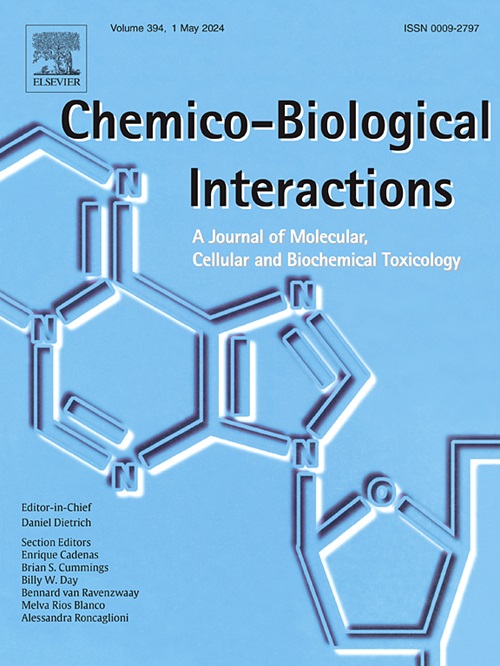Flavonoids and their role in oxidative stress, inflammation, and human diseases
IF 4.7
2区 医学
Q1 BIOCHEMISTRY & MOLECULAR BIOLOGY
引用次数: 0
Abstract
Oxidative stress and chronic inflammation are important drivers in the pathogenesis and progression of many chronic diseases, such as cancers of the breast, kidney, lung, and others, autoimmune diseases (rheumatoid arthritis), cardiovascular diseases (hypertension, atherosclerosis, arrhythmia), neurodegenerative diseases (Alzheimer's disease, Parkinson's disease, Huntington's disease), mental disorders (depression, schizophrenia, bipolar disorder), gastrointestinal disorders (inflammatory bowel disease, colorectal cancer), and other disorders. With the increasing demand for less toxic and more tolerable therapies, flavonoids have the potential to effectively modulate the responsiveness to conventional therapy and radiotherapy. Flavonoids are polyphenolic compounds found in fruits, vegetables, grains, and plant-derived beverages. Six of the twelve structurally different flavonoid subgroups are of dietary significance and include anthocyanidins (e.g. pelargonidin, cyanidin), flavan-3-ols (e.g. epicatechin, epigallocatechin), flavonols (e.g. quercetin, kaempferol), flavones (e.g. luteolin, baicalein), flavanones (e.g. hesperetin, naringenin), and isoflavones (daidzein, genistein). The health benefits of flavonoids are related to their structural characteristics, such as the number and position of hydroxyl groups and the presence of C2![]() C3 double bonds, which predetermine their ability to chelate metal ions, terminate ROS (e.g. hydroxyl radicals formed by the Fenton reaction), and interact with biological targets to trigger a biological response. Based on these structural characteristics, flavonoids can exert both antioxidant or prooxidant properties, modulate the activity of ROS-scavenging enzymes and the expression and activation of proinflammatory cytokines (e.g., interleukin-1beta (IL-1β), interleukin-6 (IL-6), and tumor necrosis factor-alpha (TNF-α)), induce apoptosis and autophagy, and target key signaling pathways, such as the nuclear factor erythroid 2–related factor 2 (Nrf2) and Bcl-2 family of proteins. This review aims to briefly discuss the mutually interconnected aspects of oxidative and inflammatory mechanisms, such as lipid peroxidation, protein oxidation, DNA damage, and the mechanism and resolution of inflammation. The major part of this article discusses the role of flavonoids in alleviating oxidative stress and inflammation, two common components of many human diseases. The results of epidemiological studies on flavonoids are also presented.
C3 double bonds, which predetermine their ability to chelate metal ions, terminate ROS (e.g. hydroxyl radicals formed by the Fenton reaction), and interact with biological targets to trigger a biological response. Based on these structural characteristics, flavonoids can exert both antioxidant or prooxidant properties, modulate the activity of ROS-scavenging enzymes and the expression and activation of proinflammatory cytokines (e.g., interleukin-1beta (IL-1β), interleukin-6 (IL-6), and tumor necrosis factor-alpha (TNF-α)), induce apoptosis and autophagy, and target key signaling pathways, such as the nuclear factor erythroid 2–related factor 2 (Nrf2) and Bcl-2 family of proteins. This review aims to briefly discuss the mutually interconnected aspects of oxidative and inflammatory mechanisms, such as lipid peroxidation, protein oxidation, DNA damage, and the mechanism and resolution of inflammation. The major part of this article discusses the role of flavonoids in alleviating oxidative stress and inflammation, two common components of many human diseases. The results of epidemiological studies on flavonoids are also presented.
类黄酮及其在氧化应激、炎症和人类疾病中的作用。
氧化应激和慢性炎症是许多慢性疾病发病和进展的重要驱动因素,如乳腺癌、肾癌、肺癌等,自身免疫性疾病(类风湿性关节炎),心血管疾病(高血压、动脉粥样硬化、心律失常),神经退行性疾病(阿尔茨海默病、帕金森病、亨廷顿病),精神障碍(抑郁症、精神分裂症、双相情感障碍),胃肠道疾病(炎症性肠病、结直肠癌)和其他疾病。随着对低毒性和更耐受的治疗方法的需求不断增加,类黄酮具有有效调节对常规治疗和放疗的反应性的潜力。类黄酮是一种多酚类化合物,存在于水果、蔬菜、谷物和植物性饮料中。在12个结构不同的类黄酮亚群中,有6个对膳食有重要意义,包括花青素(如花青素、花青素)、黄烷-3-醇(如表儿茶素、表没食子儿茶素)、黄烷醇(如槲皮素、山烯酚)、黄酮(如木犀草素、黄芩素)、黄酮(如橙皮素、柚皮素)和异黄酮(如大豆黄酮、染料木素)。黄酮类化合物的健康益处与其结构特征有关,如羟基的数量和位置以及C2=C3双键的存在,这预先决定了它们螯合金属离子的能力,终止ROS(如由Fenton反应形成的羟基自由基),并与生物靶标相互作用以触发生物反应。基于这些结构特征,黄酮类化合物可以发挥抗氧化或促氧化特性,调节ros清除酶的活性和促炎细胞因子(如白细胞介素-1β (IL-1β)、白细胞介素-6 (IL-6)、肿瘤坏死因子α (TNF-α))的表达和激活,诱导细胞凋亡和自噬,并靶向关键信号通路,如核因子红细胞2相关因子2 (Nrf2)和Bcl-2家族蛋白。本文将从脂质过氧化、蛋白质氧化、DNA损伤、炎症的机制和解决等方面对氧化和炎症相互关联的机制进行综述。本文的主要部分讨论了黄酮类化合物在减轻氧化应激和炎症中的作用,这是许多人类疾病的两个常见成分。本文还介绍了黄酮类化合物的流行病学研究结果。
本文章由计算机程序翻译,如有差异,请以英文原文为准。
求助全文
约1分钟内获得全文
求助全文
来源期刊
CiteScore
7.70
自引率
3.90%
发文量
410
审稿时长
36 days
期刊介绍:
Chemico-Biological Interactions publishes research reports and review articles that examine the molecular, cellular, and/or biochemical basis of toxicologically relevant outcomes. Special emphasis is placed on toxicological mechanisms associated with interactions between chemicals and biological systems. Outcomes may include all traditional endpoints caused by synthetic or naturally occurring chemicals, both in vivo and in vitro. Endpoints of interest include, but are not limited to carcinogenesis, mutagenesis, respiratory toxicology, neurotoxicology, reproductive and developmental toxicology, and immunotoxicology.

 求助内容:
求助内容: 应助结果提醒方式:
应助结果提醒方式:


